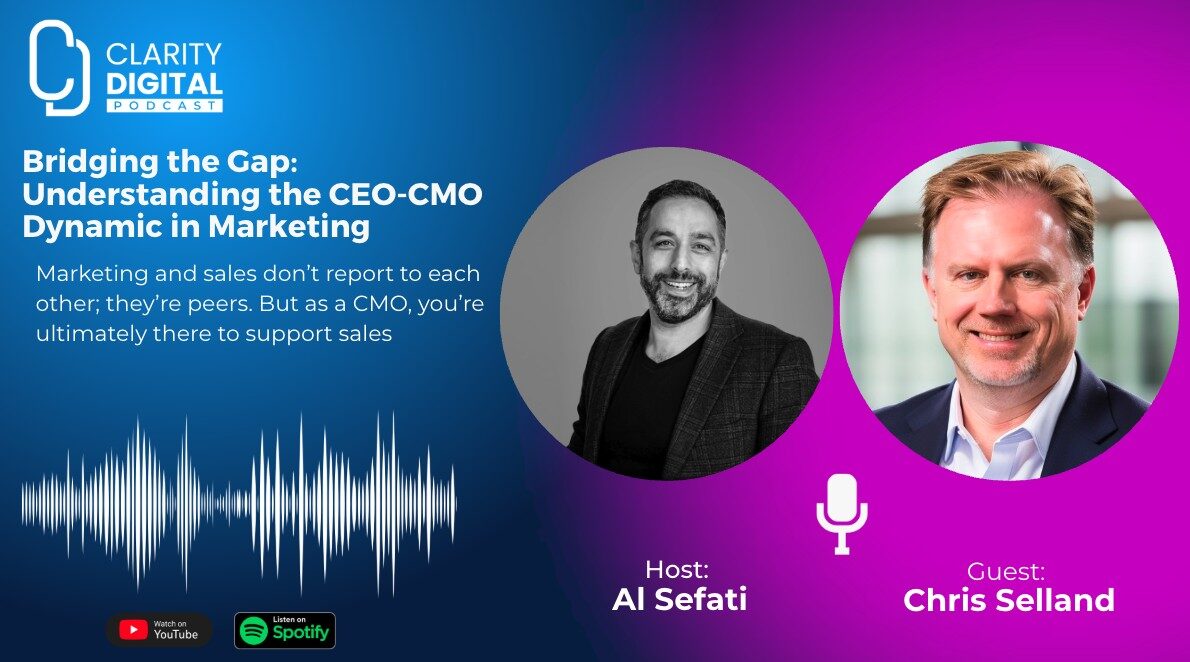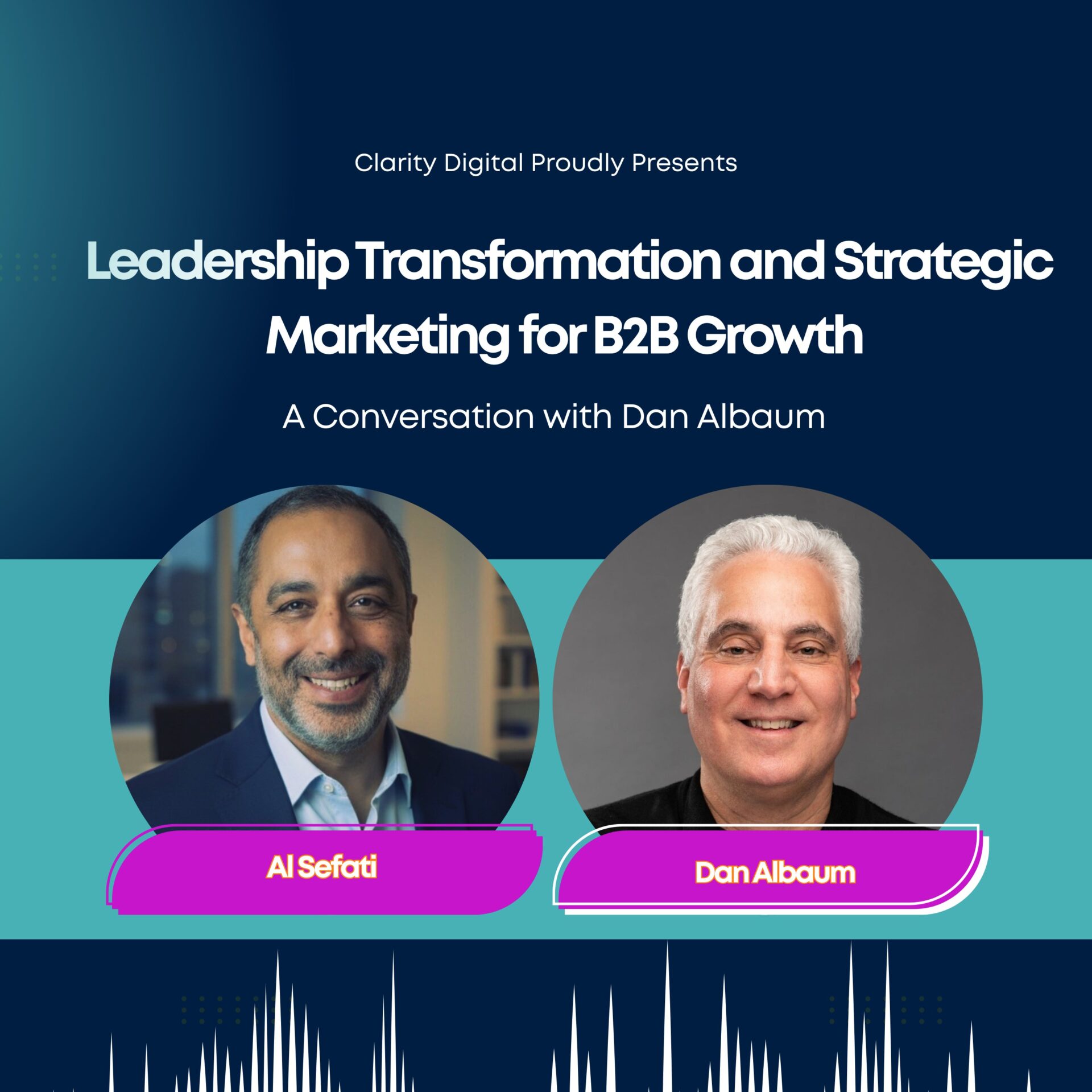Understanding the CEO’s Role in the C-Suite
Chris wasted no time in breaking down the reality of the CEO role. Despite holding the title of “chief executive,” the CEO isn’t an all-powerful figure. As Chris puts it,
“Your job as CEO is to be the head executor of the business. You run the business, but you don’t get to make all the decisions—ultimately, the board and the owners have the final say.”
In the B2B SaaS world, where many CEOs come from a sales background, this perspective often shapes how they view marketing—through the lens of pipeline, revenue, and bottom-line results. That can sometimes clash with the longer-term, multi-touch strategies that marketing leaders know are essential for success.
The Sales vs. Marketing Tension: Inevitable but Manageable
We dug into a common pain point: the friction between marketing and sales. Chris recalled a moment early in his career when a CEO told him,
“I like a little creative tension between sales and marketing—it keeps them on their toes.”
That mindset might keep teams sharp, but Chris was quick to point out the risk:
“The key is not letting it get out of hand. And that’s the CEO’s job. Marketing and the CRO can control their own behavior, but they can’t control whether things spiral. That’s where the CEO has to step in.”
Chris made it clear that in B2B, marketing’s ultimate job is to support sales.
“Marketing and sales don’t report to each other; they’re peers. But as a CMO, you’re ultimately there to support sales. If you’re not supporting sales, you’re not doing your job in B2B.”
Vanity metrics like MQLs, impressions, and clicks might matter for optimizing campaigns, but they’re not what the board wants to hear. As Chris put it,
“You can’t just report MQLs and impressions—those are useful for marketers but meaningless to the board. What they care about is pipeline and revenue. That’s where the accountability lies.”
Why CMOs Often Struggle—and What They Can Do About It
We touched on a harsh reality: CMO tenure in B2B is often short. Chris attributes this in part to marketing’s less-direct impact on revenue compared to sales. The pressure to prove value leads many CMOs to oversell their impact or over-focus on early-funnel metrics—mistakes that can backfire fast.
Chris’s advice was clear:
“Marketers need to be honest about what’s working and what’s not. Don’t keep doing things just because you always have. If it’s not delivering pipeline, stop doing it.”
He also stressed the importance of transparency when working with CFOs:
“The CFO has to tell you the truth—sometimes it’s what you don’t want to hear. And you need to have that relationship, because they’re a key player in deciding where the money goes.”
Building trust with the CFO, aligning with the CEO, and working in lockstep with the CRO—that’s the formula for a CMO who survives and thrives in B2B.
Educating the C-Suite on Marketing’s Role: A Delicate Balance
I asked Chris whether CMOs should be spending more time educating their CEO and peers on how marketing works—things like the funnel, customer journeys, and how different tactics play out over time.
His response was sharp:
“Yes, it would be helpful, but pick your spots. If you push too hard, it can come off as defensive or excuse-making. The CEO and CFO want the truth, not spin. Be a truth-teller, and tie your messaging back to business impact—not marketing jargon.”
AI’s Disruptive Force: How CMOs (and CEOs) Must Adapt
Naturally, the conversation turned to AI. Chris didn’t sugarcoat the reality:
“There’s no career path more threatened by AI than content marketing. AI can create content. It’s happening. Companies are reducing headcount because AI allows you to do more with less.”
He shared examples from the trenches, including a major SaaS company that cut its content marketing team from five people down to one—thanks to AI. The lesson? Adapt or fall behind.
Chris was clear on the responsibility of leadership in this moment:
“CEOs can’t avoid AI. They’re under pressure from boards and investors to innovate. It’s not about which LLM you use—it’s about how you apply AI to increase productivity, reduce costs, and drive business outcomes.”
I chimed in with our agency’s own journey—how we’ve cut back on manual tasks by using tools like ChatGPT, Gemini, and design automation platforms. This shift has let us focus more on strategy, optimization, and delivering value to clients.
Chris summed it up perfectly:
“Marketers tend to be good storytellers, but they have to be careful not to spin the narrative internally. The CEO and CFO want to hear the truth: what’s working, what’s not, and how we’re going to fix it.”
Key Takeaways for CMOs and CEOs Alike
Chris left us with a set of principles every B2B marketing leader should embrace:
- Be Transparent: Don’t spin results. Be honest about what’s working and what’s not.
- Focus on Business Outcomes: MQLs and clicks don’t matter if they don’t lead to sales.
- Build Bridges, Not Barriers: Partner with the CFO, CRO, and CEO. Alignment is your survival kit.
- Embrace AI Now: It’s not optional. Learn how to leverage AI strategically, not just tactically.
- Stay Adaptable: What worked in the zero-interest-rate era won’t necessarily work today.
A Glimpse Into Chris’s World
Beyond the C-suite, Chris lives a full life. He’s a dog lover, an avid skier, a reader, and a fan of the beautiful game—soccer. Specifically, Arsenal. And when asked which superhero he’d be, Chris leaned into the complexity of leadership:
“I’ve always admired Batman—dark, brooding, and complex—but I also love the bold brilliance of Ironman. Both navigate challenges with grit and vision.”
Final Thoughts: Staying Agile, Honest, and Focused is Essential for B2B Leaders
This episode was packed with real-world insights for anyone in B2B leadership—whether you’re a CEO working to align your team or a CMO navigating the shifting marketing landscape. As Chris pointed out, the pace of change—especially with AI—isn’t slowing down. The key is to stay agile, tell the truth, and focus on what drives real business growth.




